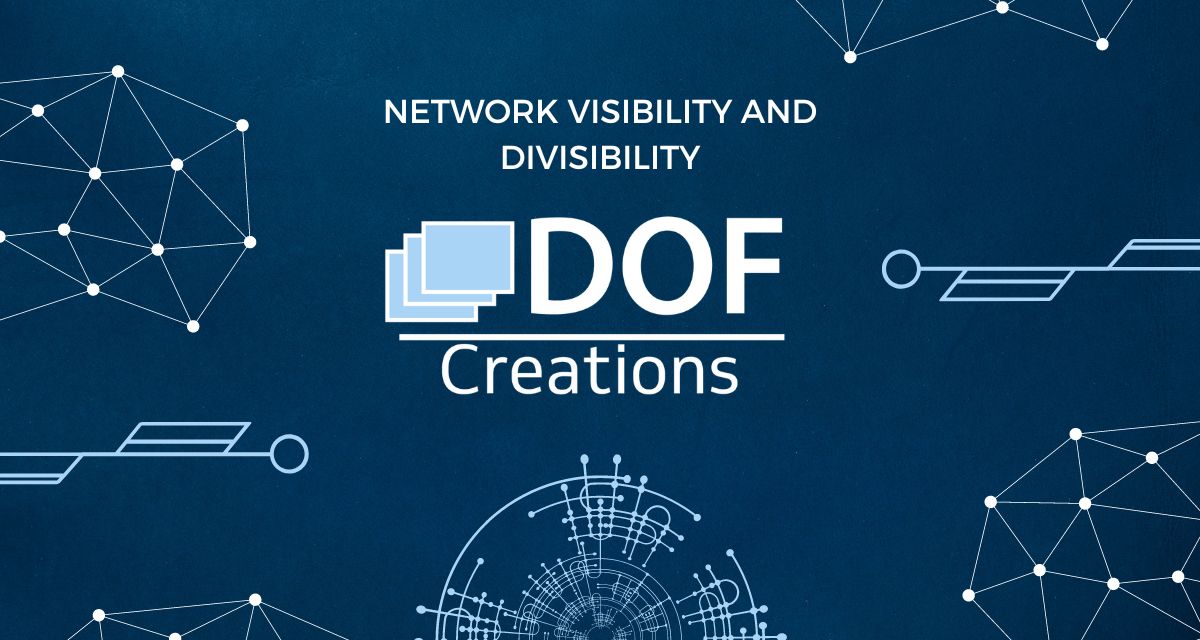Network visibility and divisibility are two important concepts in information technology infrastructure that are closely related. As more and more organizations rely on 3rd partners, permit or rely on greater data sharing, or open themselves to broad array of external devices that aren’t managed by them, increased visibility is a necessity. But it’s not just about knowing what’s there, we need to limit our exposure by isolating and moving unwanted devices or traffic to safe spaces on our networks, or at least spaces where they can do no harm.
Network visibility refers to the ability to monitor and analyze network traffic in real-time. This allows network administrators to identify potential problems or security threats, troubleshoot issues, and optimize network performance. Without network visibility, it can be difficult to understand what is happening on the network, which can lead to poor network performance and security vulnerabilities.
Divisibility, on the other hand, refers to the ability to break down a network into smaller, more manageable segments. This can be achieved through the use of virtual LANs (VLANs) or network segmentation. By dividing a network into smaller segments, it is easier to manage and secure each segment individually. Device isolation can be achieved through a variety of methods, such as physical isolation, network segmentation, or virtualization. For example, if a security breach occurs in one segment, it is less likely to affect other segments of the network.
Both network visibility and divisibility are important for building a strong and secure information technology infrastructure.
With network visibility, administrators can monitor and analyze network traffic to identify potential problems and improve performance. With divisibility, administrators can break down the network into smaller segments, making it easier to manage and secure each segment individually.
The combination of network segmentation and device isolation can greatly enhance the security of a network. By segmenting the network, sensitive data can be isolated from the rest of the network, making it more difficult for attackers to gain access. Device isolation can prevent the spread of malware or other threats, as well as limit access to sensitive data to only authorized users.
Suppose an organization’s network covers multiple locations and includes various types of devices, such as servers, routers, switches, and endpoints. Without proper network visibility, it can be difficult for the company to detect and respond to security incidents, such as cyber attacks or data breaches.
By implementing network visibility solutions, such as network monitoring tools, the company can gain a clear view of all network activity and identify potential security threats in real time. For example, if an unauthorized user attempts to access a restricted system or if unusual traffic patterns are detected, the network monitoring tool can alert the security team immediately.
Simply having network visibility is not enough.
The network must also be divisible into smaller segments, each with its own access controls and security policies. By dividing the network into smaller segments, the company can limit the scope of any potential security breaches and contain the damage.
For example, suppose an attacker gains access to a single endpoint on the network. If the entire network is one large segment (like a single flat surface), the attacker may be able to move laterally through the network and access other systems and data. However, if the network is divided into smaller segments, the attacker’s access would be limited to that specific segment, preventing them from moving laterally and limiting the damage.
In summary, network visibility and divisibility can protect an organization by providing real-time monitoring and threat detection while limiting the scope of any potential security breaches. Network segmentation and device isolation are important practices for building a secure and resilient network infrastructure. By isolating sensitive data and devices, and segmenting the network into smaller, more manageable subnets, organizations can greatly enhance their security posture and reduce the risk of data breaches and other security incidents.



